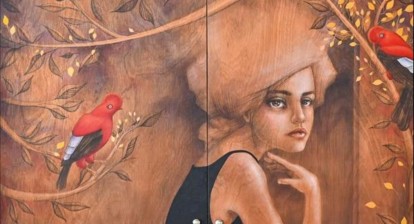“We must differentiate between perspective – which makes storytelling richer, and bias – which can cloud the storytelling,” said award-winning American photojournalist Whitney Johnson, discussing how more people are empowered than ever before to become storytellers in the era of advanced technology.
Johnson, Vice President of Visual and Immersive Experiences at National Geographic, was speaking on ‘New Voices, New Visions’ at the sixth Xposure International Photography Festival, which concluded yesterday (Tuesday) at Expo Centre Sharjah.
Calling herself a storyteller and not a photographer, she said: “The work of a Nat Geo photographer proves time and again how impactful the emotional response to a visual can be in promoting an understanding of the world around us.”
The magazine’s photographs of the last male northern white rhino, of people exonerated from the death row in the US, a Covid-19 victim’s body in Indonesia, and another capturing 2,000 miles of pristine Central African rainforest have made people sit up and take notice or urge authorities into action, she said, citing the example of the government of Gabon in reserving 10% of its territory to create 13 national parks.
Amongst the list of National Geographic’s firsts, she said, are pioneering underwater photography and a 360-degree video from the International Space Station. An upcoming project with NASA will tell the story of Artemis II which will carry astronauts around the Moon and back to Earth in an Orion spacecraft, she added.“It plans to provide an immersive audio-visual experience that would be akin to bringing the moon back to the 8 billion people on Earth.”
Xposure’s most fascinating experience – the Photo Ark,she added, is provided by National Geographic photographer Joel Sartore, who is on a mission to document every species in captivity worldwide.
According to Johnson, visual storytelling has seen a sea change since the Internet of the 2000s, and digital photography has transformed the speed with which content is captured and delivered. “Publishing a picture is now only the beginning of a conversation with your audience, especially in the smartphone era when everyone is a photographer and publisher,” she observed.
In the era of Web 2.0, National Geographic has embraced augmented reality, taking over 50 million viewers to the top of Mt. Everest and to the surface of Mars. Virtual reality has opened doors for immersive travel experiences, offering encounters that one might not have in the real world, said Johnson, predicting that the metaverse would soon take the next lead in driving storytelling opportunities.





